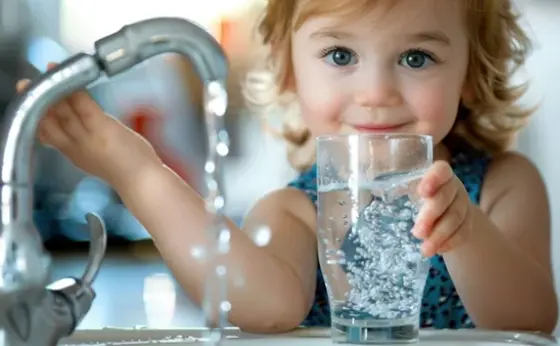Lead and Copper Testing for Schools
Compliant Testing Solutions for Schools Across NY and NJ
Ensuring safe drinking water in educational facilities is critical to student health and regulatory compliance. Lead and copper can leach into drinking water from plumbing materials, particularly in older buildings. Our accredited laboratory provides comprehensive sampling and testing services for schools across New York and New Jersey, helping you meet state-specific requirements with confidence.
"*" indicates required fields

Why Test for Lead and Copper?
Lead exposure, even at low levels, can impair children’s development, behavior, and learning.
Copper, while essential in small amounts, can cause health issues when consumed in excess.
Children are especially at risk due to their developing systems. Schools must take proactive steps to monitor water quality and address contamination risks.
Regulatory Requirements
Testing required every three years as per N.J.A.C. 6A:26-12.4.
Applies to all public schools, including administrative and athletic facilities.
Must test all drinking water outlets used for consumption or food prep.
Sampling protocol includes Initial First Draw and Follow-Up Flush samples.
Immediate action is required for results ≥ 15.5 ppb (µg/L) for lead.
Testing required every 5 years under NY Public Health Law §1110.
Applies to all public schools and BOCES, and certain nonpublic schools.
Must test all potable water outlets used for drinking or cooking.
Action level for lead is 5 ppb (µg/L) — more stringent than EPA and NJ.
Follow-up actions include shutting off outlets, public notification, and remediation.
Our Services
Not Sure If You Need Testing? Contact Us for Guidance
Don’t wait for issues to arise—regular testing can prevent costly problems and health risks.
Our Services Include:
Customized Sampling Plans per NY/NJ requirements
On-site sample collection by trained technicians
Initial First Draw & Follow-Up Flush sampling
Analysis by a certified laboratory (EPA Method 200.8 by ICP-MS)
Plumbing profile and fixture assessment support
Detailed reporting with interpretation and recommendations
Guidance on corrective actions, communication, and documentation
Support with regulatory filing and notifications
Why Choose PITS Environmental?

Accredited Expertise
Our lab meets stringent standards, ensuring accuracy and reliability.

Advanced Technology
We utilize state-of-the-art instruments for precise analysis.

Tailored Solutions
Testing services customized to your specific agricultural needs.

Fast Turnaround
Timely results to help you make critical decisions without delay.
Frequently Asked Questions
Is lead and copper testing required in schools?
Yes.
- In New Jersey, lead testing is mandatory every 3 years for all public schools per N.J.A.C. 6A:26-12.4.
- In New York, lead testing is required every 5 years per Public Health Law §1110. Copper testing is not mandatory in either state, but strongly recommended to assess potential plumbing corrosion issues.
What is the acceptable limit for lead in school drinking water?
- New York: Action level is 5 µg/L (ppb) — one of the strictest in the U.S.
- New Jersey: Action level is 15.5 µg/L (ppb). Any result equal to or above the applicable threshold requires immediate action.
What outlets must be tested?
All outlets used for drinking or food preparation, including:
- Kitchen faucets
- Drinking fountains and water coolers
- Bottle filling stations
- Ice machines
- Nurse’s office and teacher lounge sinks
- Classroom or bathroom faucets used for brushing teeth or drinking
How are samples collected?
Each sampling point typically requires:
- Initial First Draw Sample – taken after 8+ hours of water stagnation
- Follow-Up Flush Sample – collected after flushing water for 30 seconds (or 15 minutes for chilled units)
Samples must be collected in certified bottles and tested at a state-accredited laboratory using EPA Method 200.8 or other approved methods.
What happens if a sample exceeds the action level?
Schools must:
- Immediately shut off or restrict access to the affected outlet
- Post signage (e.g., “Do Not Drink – Safe for Handwashing”)
- Provide alternate sources of safe drinking water
- Notify staff, students, and parents within 24 hours
- Consider fixture replacement, filtration, or other remedial actions
How often do schools need to retest?
- NJ: Every 3 years or after plumbing changes/remediation
- NY: Every 5 years or within 30 days after replacing a fixture
Do schools need a plumbing profile?
Yes. A plumbing profile helps identify potential lead sources (e.g., lead pipes, solder, or brass fixtures), prioritize testing locations, and guide remediation.
Can schools be tested while in session?
Yes, as long as water has remained undisturbed for 8–48 hours. Early mornings, weekends, or breaks are commonly used for proper stagnation.
How are parents and staff notified of results?
If any result exceeds the action level:
- Written notice must be sent to parents, staff, and the DOE (NJ/NY)
- Full test results must be made publicly available, including on the school or district website
Request a Test or Consultation
Your Environment, Our Priority – Fill out the form below, and our team will get back to you as soon as possible.
"*" indicates required fields